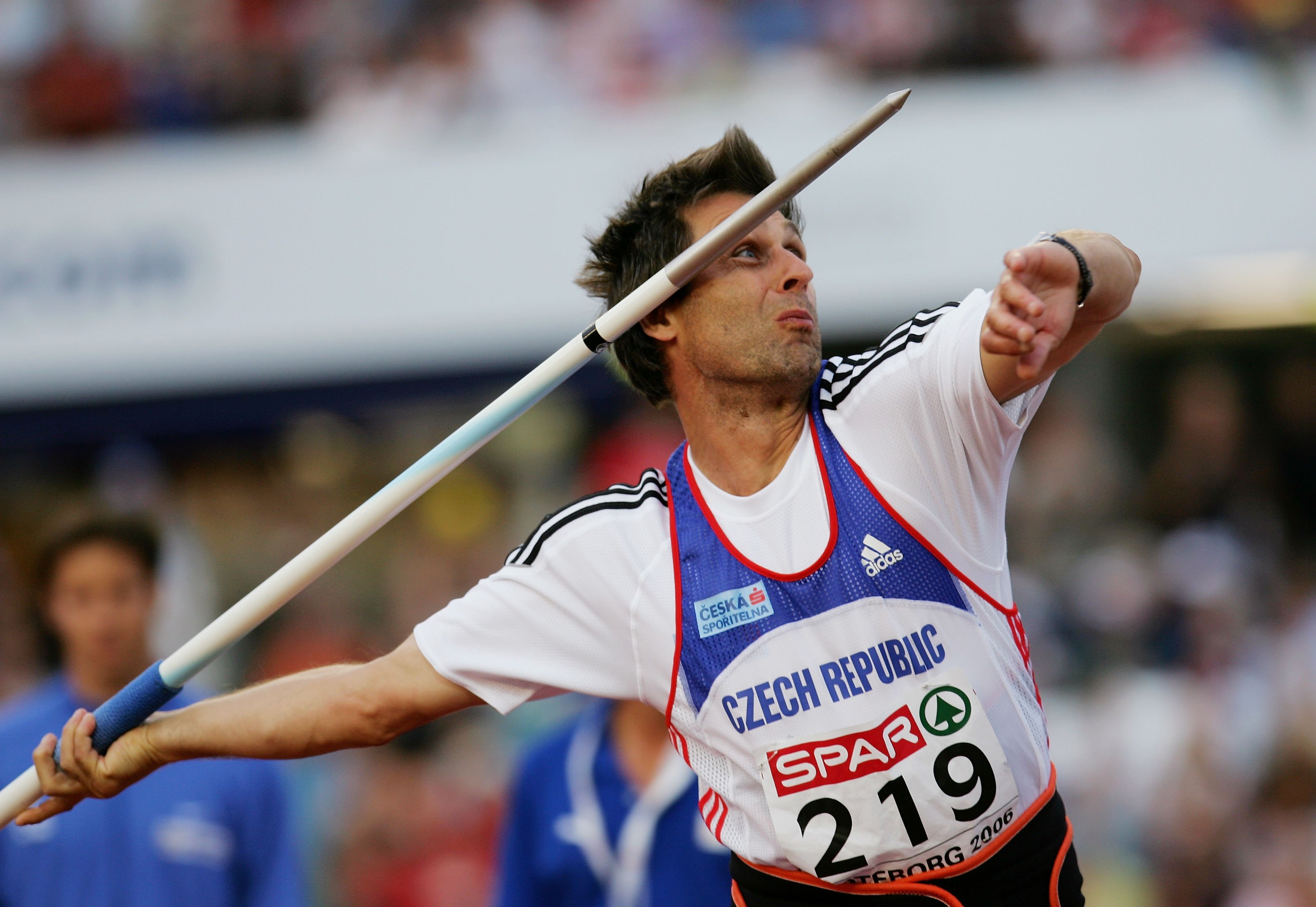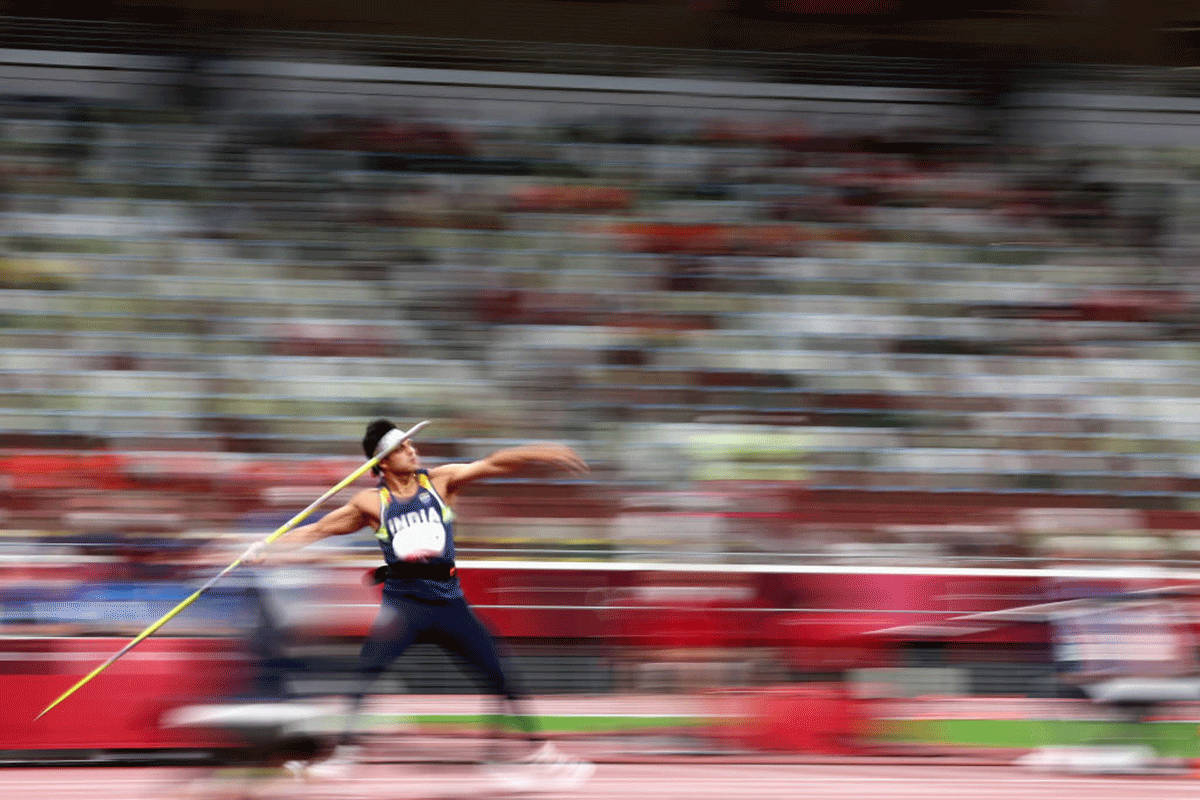History and Evolution of Men’s Javelin

The javelin throw is a timeless athletic event with roots dating back to ancient civilizations. Its evolution as a sport has been marked by significant changes in design, technique, and regulations, shaping the event into the thrilling competition we know today.
Origins and Early History, Men’s javelin
The javelin’s origins are deeply intertwined with human history. Ancient civilizations used spears for hunting and warfare, and these implements were often thrown with great skill and precision. Evidence suggests that javelin throwing competitions were held in ancient Greece and Rome, where athletes competed for glory and prizes.
Evolution of Javelin Design and Techniques
The javelin has undergone significant transformations throughout its history. Early javelins were made of wood and often had a pointed stone tip. As technology advanced, javelins were crafted from metals like bronze and iron, leading to greater durability and throwing range.
- Early 20th Century: The javelin’s design continued to evolve in the early 20th century, with the introduction of metal shafts and a more aerodynamic profile. This led to increased throwing distances and a shift in throwing techniques.
- 1950s: A major turning point came in the 1950s with the introduction of the “Finnish grip.” This technique, pioneered by Finnish javelin throwers, involved holding the javelin closer to the tip, resulting in increased speed and accuracy.
- 1980s: The 1980s saw further innovations in javelin design, with the development of composite materials and more sophisticated aerodynamic shapes. These advancements further increased throwing distances and influenced throwing techniques.
Notable Milestones and Rule Changes
The history of men’s javelin is punctuated by notable milestones and rule changes that have shaped the event’s evolution.
- 1985: The International Association of Athletics Federations (IAAF) introduced a new rule that required javelins to be designed with a shorter center of gravity. This change was implemented to reduce the risk of injuries to athletes and spectators.
- 1992: The first javelin competition was held at the Summer Olympics in Barcelona, Spain.
- 2000s: The javelin continues to evolve with advancements in materials, techniques, and training methods. The pursuit of greater throwing distances and innovative techniques remains a driving force in the sport.
Techniques and Strategies

The javelin throw is a complex event that requires a combination of strength, speed, and technique. Athletes must master the proper grip, throwing motion, and body mechanics to maximize their throw distance.
Proper Grip and Throwing Motion
The grip on the javelin is crucial for achieving a powerful and accurate throw. The athlete should grip the javelin with their dominant hand near the center of gravity, about 10 to 15 centimeters behind the balance point. The non-dominant hand should be placed on the javelin about 10 centimeters from the dominant hand. This grip allows for optimal control and leverage during the throw.
The throwing motion can be broken down into several phases:
- Approach: The athlete starts the throw with a running approach, building momentum and speed. The approach should be smooth and controlled, with a gradual increase in speed. The athlete should focus on maintaining a good posture and balance throughout the approach.
- Plant: As the athlete nears the throwing area, they plant their dominant foot, creating a pivot point for the throw. The non-dominant leg should be lifted and brought forward, providing additional power and balance.
- Throw: With the plant foot firmly on the ground, the athlete rotates their body, driving their hips forward and transferring their momentum to the javelin. The dominant arm extends forward, releasing the javelin with a whip-like motion. The non-dominant arm should be used to help stabilize the body and maintain balance during the throw.
- Follow-through: After releasing the javelin, the athlete should maintain a controlled follow-through, ensuring that the body continues to rotate and maintain balance. The follow-through helps to prevent injuries and maximize the throw distance.
Importance of Body Mechanics and Biomechanics
Body mechanics and biomechanics play a crucial role in javelin throwing. The athlete’s body must be aligned correctly to generate maximum power and accuracy. This includes:
- Posture: Proper posture is essential for maintaining balance and stability throughout the throw. The athlete should maintain a straight back, relaxed shoulders, and a slightly bent dominant knee.
- Core Strength: Strong core muscles are vital for transferring power from the lower body to the upper body. Core exercises such as planks and crunches can help to strengthen the core muscles.
- Rotation: The athlete’s body must rotate efficiently to generate maximum power and momentum. The hips should rotate forward, while the shoulders and upper body should remain relatively stable.
Different Javelin Throwing Styles
There are several different javelin throwing styles, each with its own advantages and disadvantages.
- The “Vee” Style: This style is characterized by a “V” shape created by the athlete’s arms during the throw. The athlete’s dominant arm extends forward, while the non-dominant arm remains close to the body. This style is known for its power and accuracy, but it can be difficult to master.
- The “Straight Arm” Style: This style involves a straight arm throughout the throw. The athlete’s dominant arm extends forward in a straight line, with the non-dominant arm used for balance. This style is often used by athletes who are not as strong or flexible as those who use the “Vee” style.
- The “Mixed” Style: This style combines elements of the “Vee” and “Straight Arm” styles. The athlete uses a straight arm during the initial part of the throw, then transitions to a “Vee” shape during the final stages of the release. This style can be more versatile than the other two styles, allowing athletes to adjust their technique based on their individual strengths and weaknesses.
Training Program for Improving Javelin Technique
A comprehensive training program should include:
- Strength Training: Strength training exercises are essential for building the muscle mass and power required for a successful javelin throw. Exercises such as squats, deadlifts, and overhead presses can help to strengthen the legs, back, and shoulders.
- Flexibility Training: Flexibility training is important for improving range of motion and preventing injuries. Exercises such as stretching and yoga can help to improve flexibility.
- Javelin-Specific Drills: Javelin-specific drills can help to refine technique and improve throwing accuracy. These drills can include practicing the proper grip, throwing motion, and follow-through.
- Speed and Agility Training: Speed and agility training can help to improve the athlete’s running approach and overall athleticism. Exercises such as sprints, cone drills, and plyometrics can help to improve speed and agility.
Notable Athletes and Records: Men’s Javelin

The men’s javelin throw has been graced by some of the most talented and powerful athletes in track and field history. These individuals have pushed the limits of human performance, breaking records and inspiring generations of throwers. The evolution of world records reflects the continuous advancement of technique, training, and equipment.
World Records in Men’s Javelin
The world record in men’s javelin has been broken and re-broken numerous times, showcasing the constant pursuit of excellence in the sport. The current world record of 98.48 meters was set by Jan Železný of the Czech Republic on May 25, 1996, in Jena, Germany. This record has stood for over two decades, making it one of the most enduring records in track and field.
“The javelin is a sport of power, technique, and precision. It’s about maximizing your potential and pushing your limits.” – Jan Železný
The evolution of the world record in men’s javelin can be traced back to the early days of the sport. The first official world record was set in 1912 by Finnish athlete Jonni Myyrä, who threw the javelin 62.32 meters. Over the years, the record has been broken by athletes from various countries, including Finland, Sweden, Germany, and the Czech Republic.
Top 10 Javelin Throwers of All Time
The top 10 javelin throwers of all time are a testament to the sport’s rich history and the exceptional talent of its athletes. These individuals have consistently demonstrated their skill and athleticism, leaving an indelible mark on the sport.
| Rank | Name | Nationality | Best Throw | Years Active |
|---|---|---|---|---|
| 1 | Jan Železný | Czech Republic | 98.48m | 1983-2006 |
| 2 | Andreas Thorkildsen | Norway | 91.59m | 2001-2013 |
| 3 | Aki Parviainen | Finland | 91.29m | 1993-2007 |
| 4 | Steve Backley | Great Britain | 91.23m | 1988-2001 |
| 5 | Seppo Räty | Finland | 90.93m | 1977-1990 |
| 6 | Terence Stevens | United States | 90.62m | 1979-1987 |
| 7 | Boris Henry | Germany | 90.41m | 1985-1996 |
| 8 | Kimmo Kinnunen | Finland | 90.31m | 1983-1992 |
| 9 | Raymond Hecht | Germany | 90.17m | 1984-1997 |
| 10 | Tom Petranoff | United States | 89.62m | 1983-1990 |
The men’s javelin throw, a test of strength and precision, has seen its share of dramatic moments. From the legendary throws of Jan Železný to the unexpected rise of a new generation, the event continues to captivate audiences. Just as the javelin arcs through the air, relationships in the public eye often take unexpected turns, like the rumored romance between Dominic Fike and Diana Silvers , leaving fans speculating and intrigued.
Back on the field, the men’s javelin remains a thrilling spectacle, with each throw a potential record-breaker.
The men’s javelin is a captivating event, where athletes showcase their power and precision. Every throw is a story of strength and determination, a testament to the human body’s potential. The javelin throw olympics final is the pinnacle of this event, where the world’s best come together to battle for glory.
In this intense competition, every throw is a moment of truth, a culmination of years of dedication and training. And as the final throw sails through the air, the crowd holds its breath, waiting for the result that will determine the champion.
